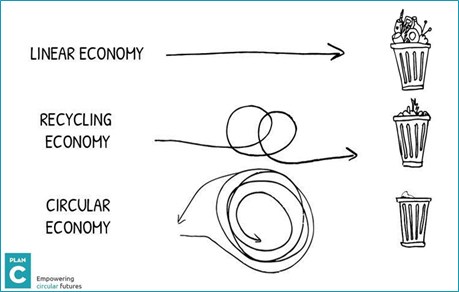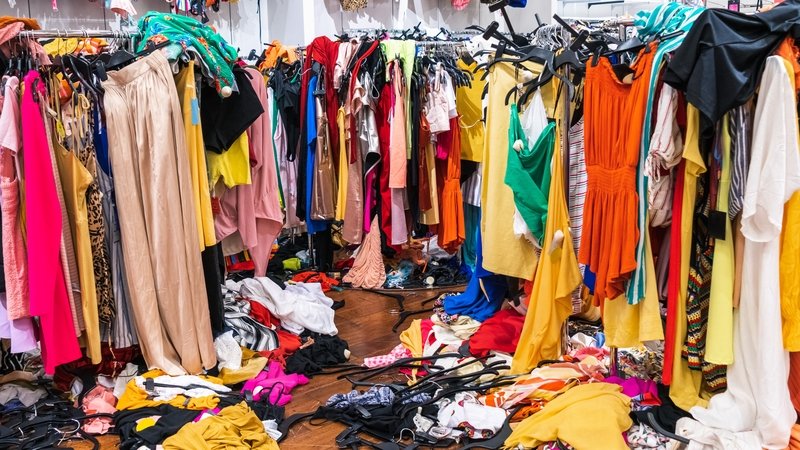Whether the raw material is obtained from a plant, animal or crude oil, the process of making textiles is both energy-demanding and pollutant-intensive, involving huge amounts of water, energy, chemicals, pesticides and herbicides.
Reuse and repair
Consider the following services for reuse and repair:
Recycle
Unwanted textiles can be recycled: donate pre-loved garments, shoes and soft furnishings to local charity shops or use the charity textile bins at bring centres and other locations.
Dispose of properly
Some textiles are not suitable for re-use or recycling such as those that are heavily soiled or worn, these should be disposed of in a clothes bank where they will be sent for shredding and used, for instance, as furniture stuffing.
The dark side of the world’s fashion addiction
The European Clothing Action Plan (ECAP)
ECAP was a €3.6 million EU LIFE funded project which aimed to reduce clothing waste across Europe and embed a circular economy approach.
Our research, Mapping clothing impacts in Europe: the environmental cost, shows there is a big opportunity for the environmental impact of clothing to be reduced.
The project ran for three and a half years, ending in March 2019. Research, case studies and recommendations will be shared on our website for years thereafter to help the sector continue its path to sustainability.
We work across eight different areas to achieve this.
The final findings of the project can be found here.
Objectives and targets
The focus of ECAP is to adopt a circular approach to divert clothing waste from landfill and incineration across Europe. Specifically it aims to:
- Divert over 90,000 tonnes of clothing waste from landfill and incineration.
- Reduce the carbon, water and waste footprints of clothing in Europe.
- Ensure that fewer low grade textiles go to incineration and landfill.
- Prevent waste in the clothing supply chain.
- Encourage innovation in resource-efficient design, recycling of textile fibres and service models to encourage business growth in the sector.
- Influence consumers to buy smarter and use clothing for longer by using the existing Love Your Clothes consumer campaign.

Links with European clothing sector
The project has important synergies with existing and upcoming sector activities and will support these to deliver best practice.
The synergies include specific sustainability goals developed through European Commission proposals such as the Circular Economy Package, Product Environmental Footprint, and EU Garment Initiative, as well as Action Plans led by National Governments and Industry Associations.
The project also delivers actions which support the UN Sustainable Development Goals (in particular goals 9, 12, 13, 15 and 17) and the Organisation for Economic Co-operation and Development.
Each of the ECAP partners work with different stakeholders across the clothing industry. Find out more about how you can get involved below.
Sustainable retailers and brands
- Sustainable fibre strategies
Developing and implementing sustainable fibre strategies for brands and retailers in the EU - Recycled fibres
Running pilots with brands and retailers to develop clothes with recycled fibre from post-consumer textiles
Inspiring designers
Helping designers and product development teams to extend the life of clothing.Design for Longevity is a platform providing knowledge, tools and inspiration to empower designers, technologists, and product developers to design more sustainable, longer lasting clothes.
Engaging clothing suppliers
Support cutting the environmental impact of their supply chain production processes.
Ground-breaking public procurement
Collaborate on developing a ground-breaking green circular public procurement strategy for workwear.
Consumer behaviour change
- Influencing young consumers
Influence those early stages of developing more sustainable buying habits, through reaching young consumers (16-24 year olds) in London. - Campaign resources for European organisations
Roll out the UK Love Your Clothes campaign across Europe, changing the way people buy, care for, and dispose of clothing
Guiding cities, municipalities and local authorities
Guiding six forward-thinking European cities in developing pilots to increase clothing recovery and recycling rates.

